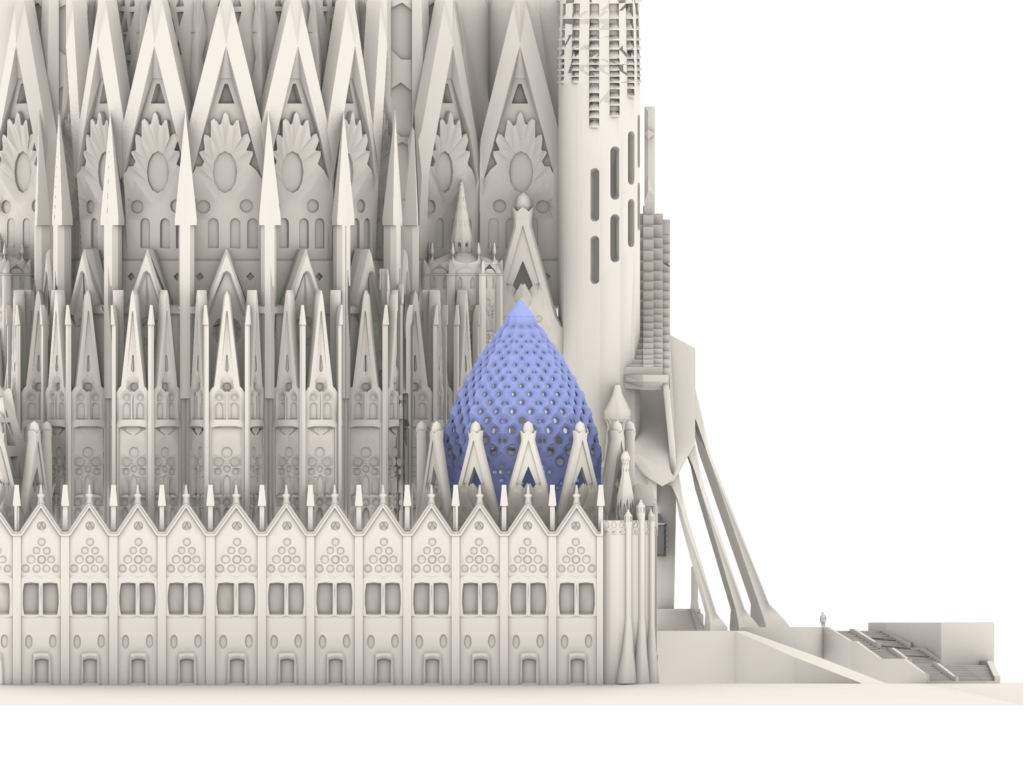
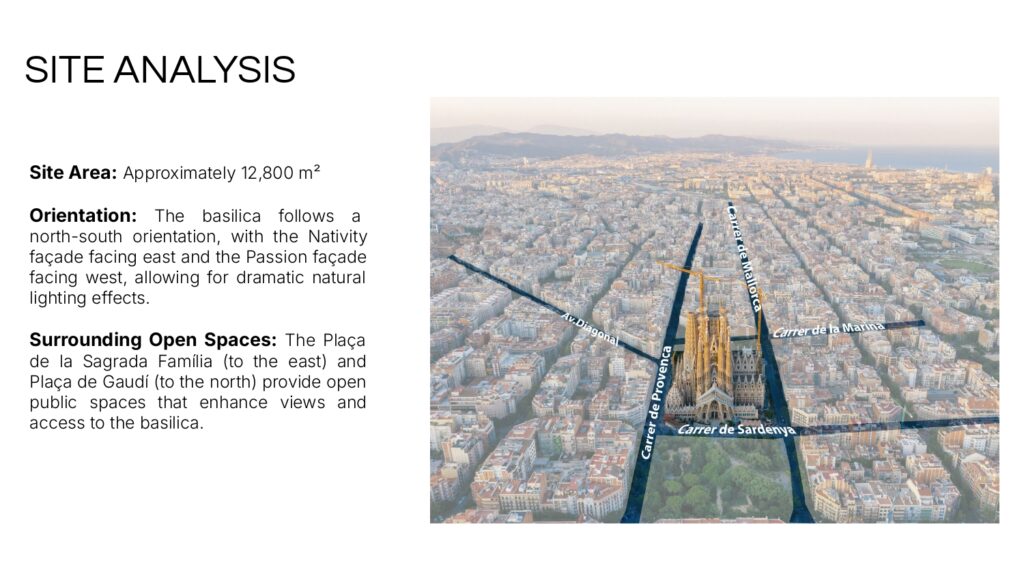
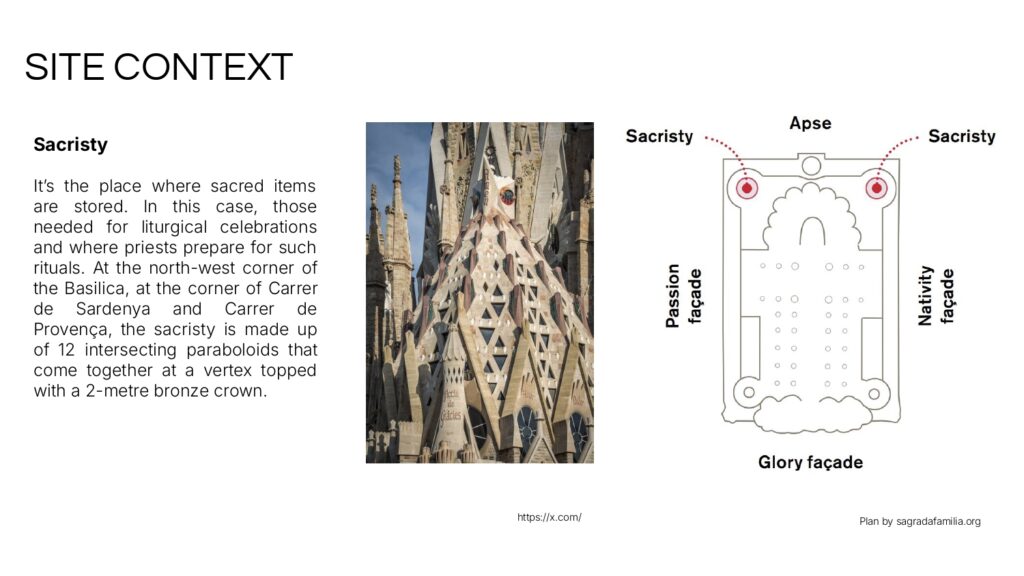
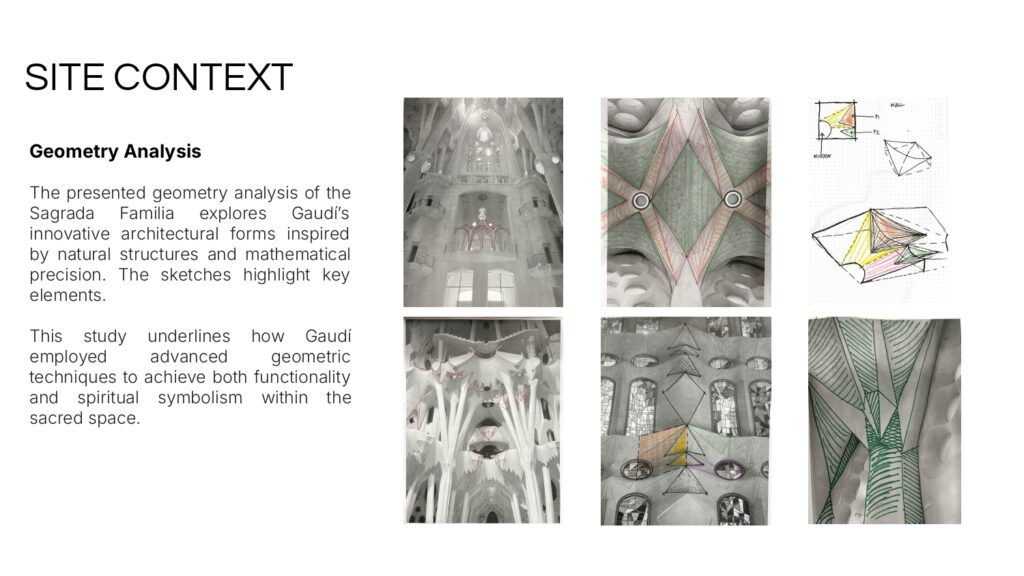
We began by understanding the context around the site of our project. More specifically, we dove into understanding the Sagrada Familia and what a sacristy is and entails. During our visit, we started analyzing the geometries found inside the basilica and how they connect to each other. Additionally, we studied the connections between different elements like the wall and the ceiling or the columns and the ceiling.
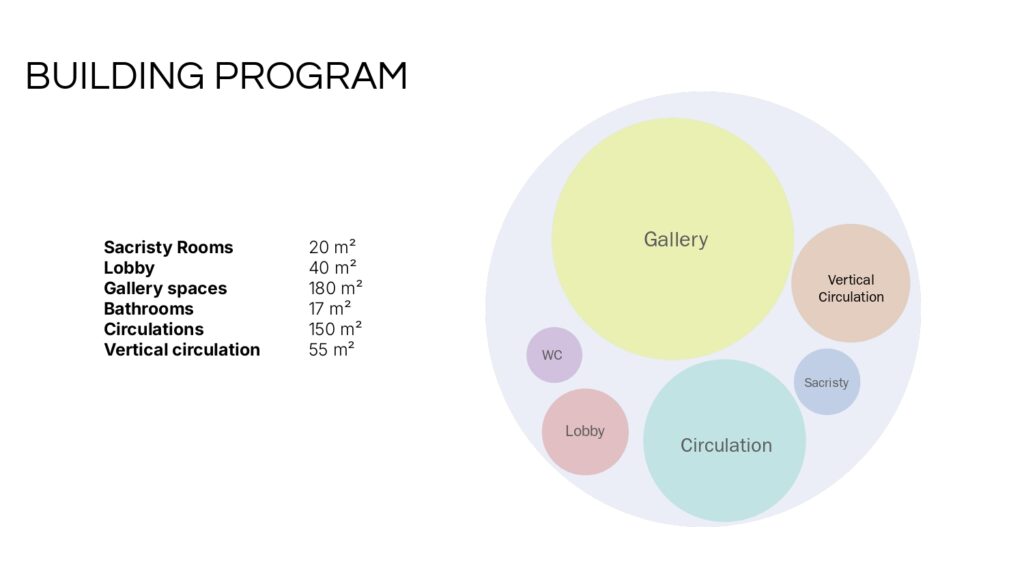
As far as the program distribution, we are proposing to turn the rest of the sacristy space into an exhibition gallery and replace the current museum and exhibition space with the offices that sit at the sacristy.
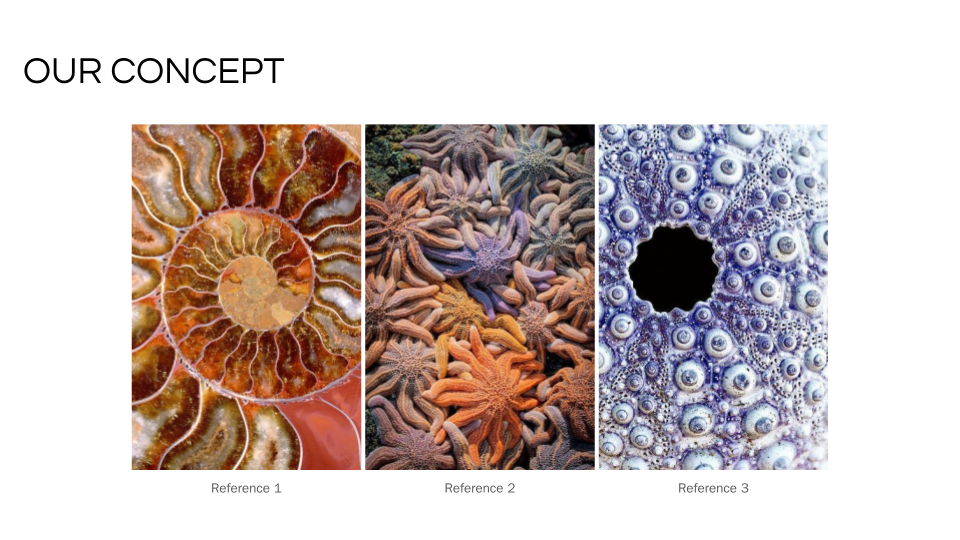
The design concept of our project was inspired by the forms and patterns found in sea creatures. With Barcelona being a coastal city, we were drawn to the ocean and designed the elements in the sacristy to emulate marine life.
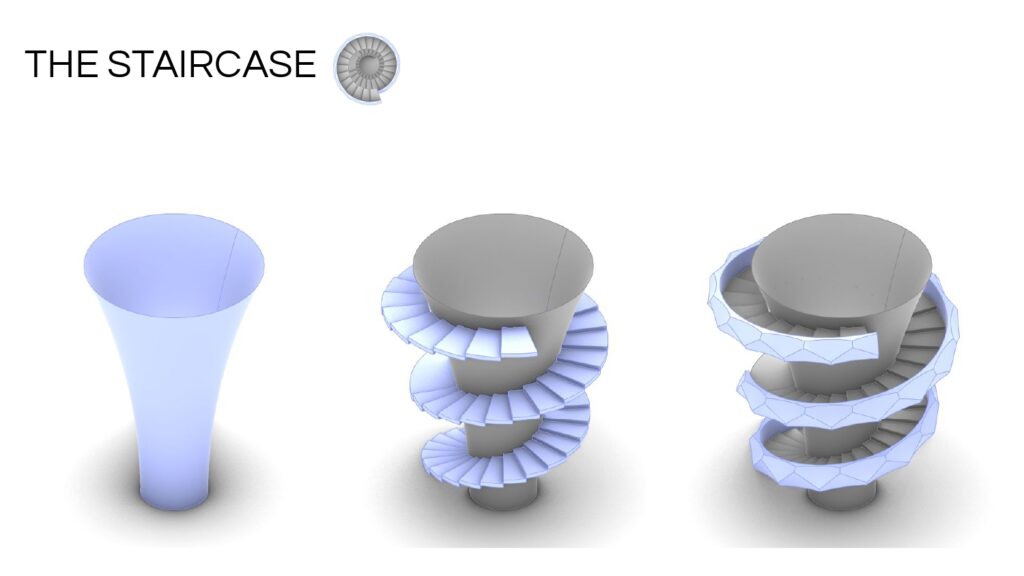
One of the main features of our design proposal is the staircase that connects all three levels. The staircase was generated from a hyperboloid such that it wraps around as it moves up which in turn creates the shape of an ammonite when you look at the stair from top view.
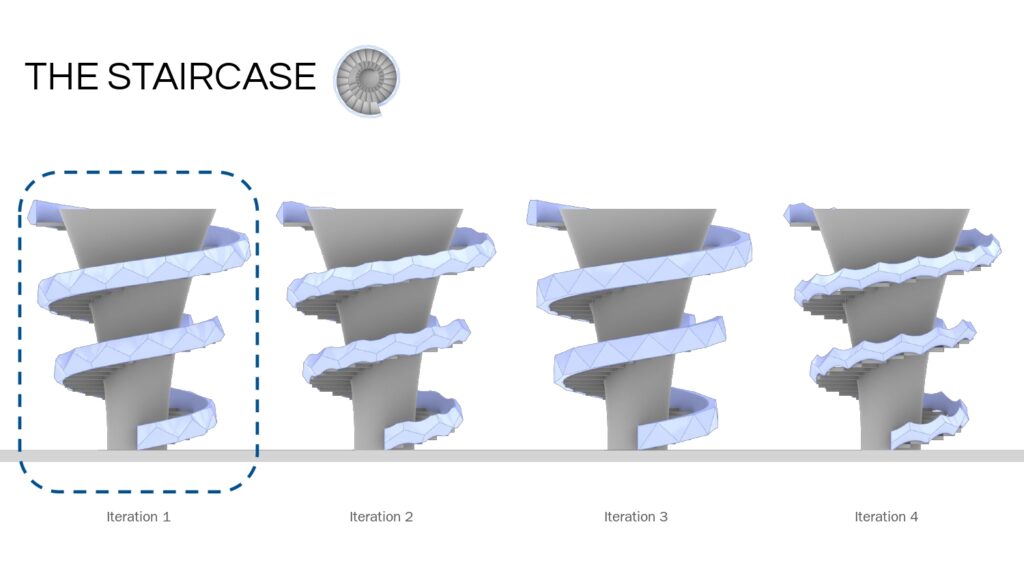
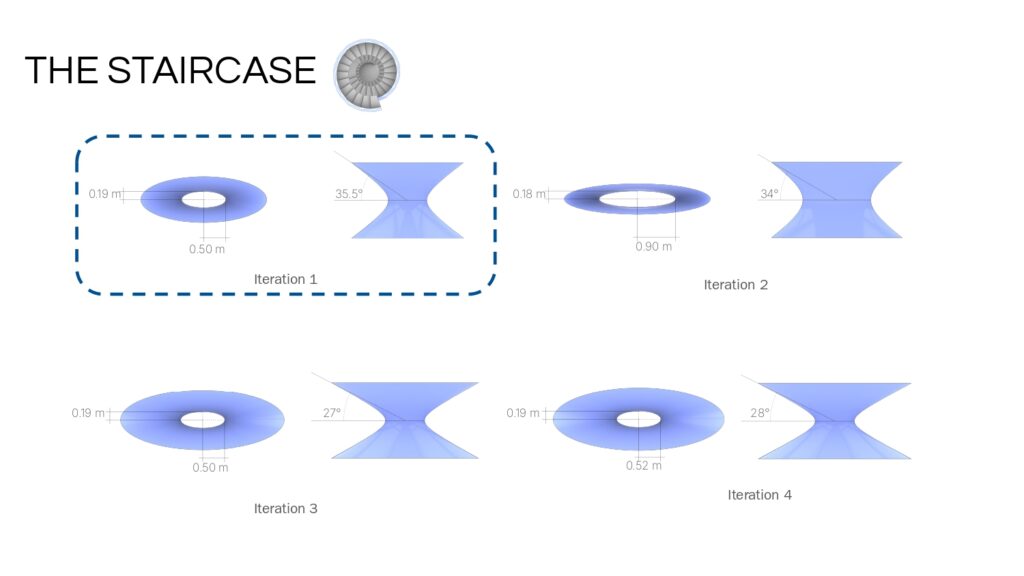
The balustrade in our staircase was created from the intersection of a hyperboloid. To explore this design, we developed a catalogue of hyperboloids to generate different intersection iterations and ultimately chose “Iteration 1”. The different hyperboloids have the same height and vary in the radii.
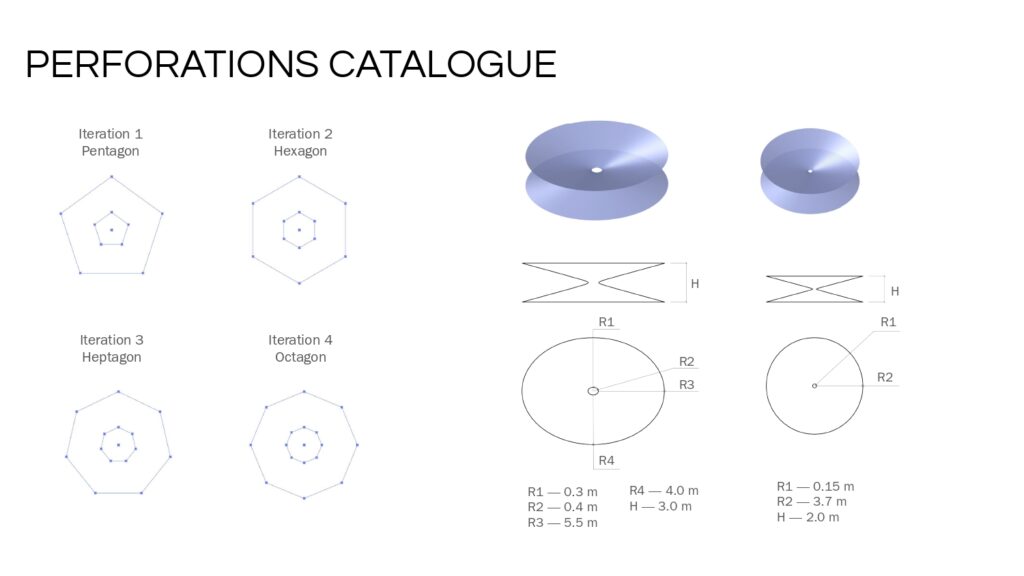
As we continue exploring geometries using Gaudi’s logic, we experimented with different perforation patterns. The design process for this was started with a polygon with 3 levels of perforation. Using 2 hyperboloids, the smaller one was used to perforate the first two while the outermost was perforated with the bigger hyperboloid. We maintained the perforation levels and hyperboloids constant and created iterations by changing the sides of the polygon.
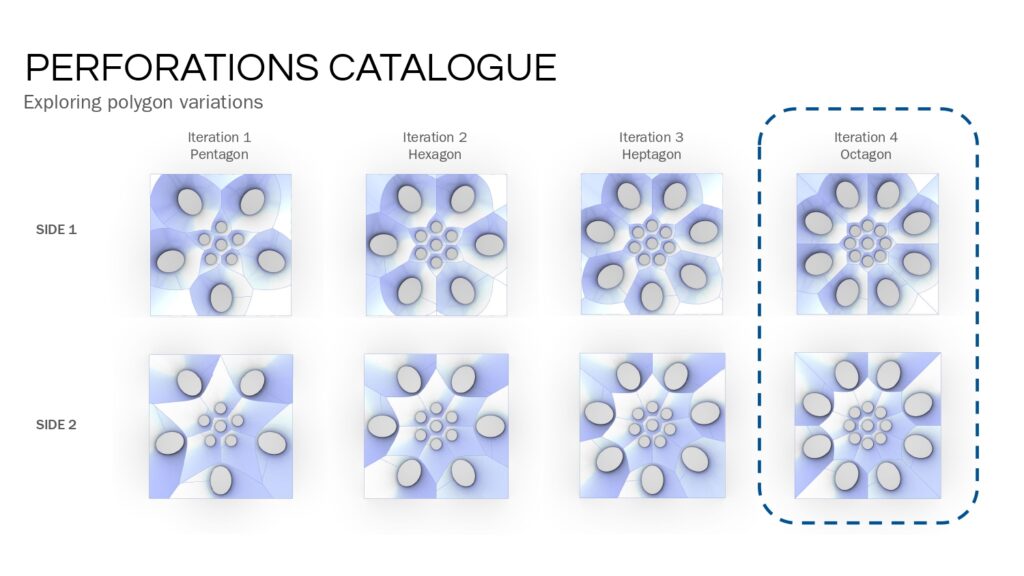
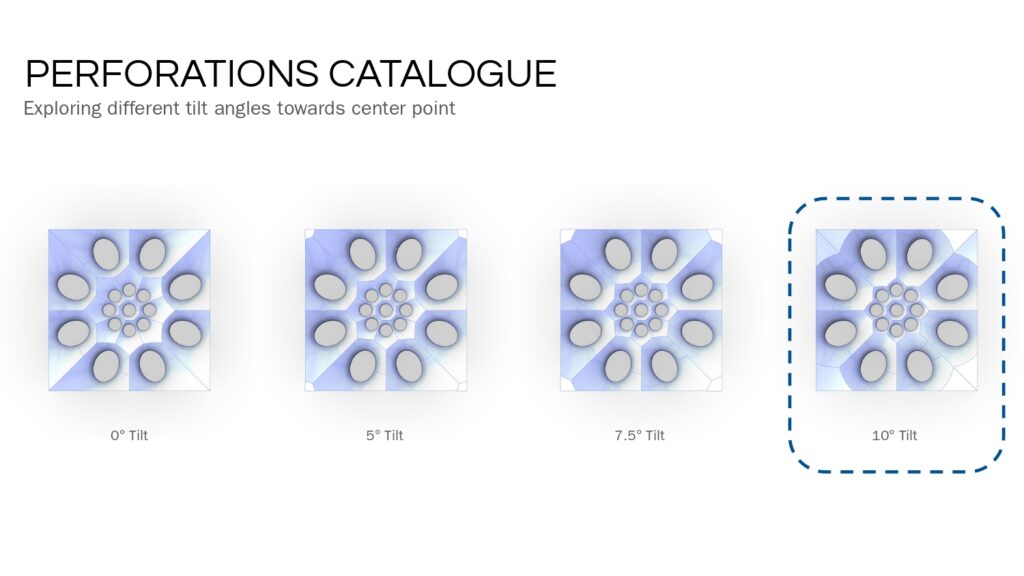
After selecting “Iteration 4” we decided to further explore it by altering the tilt of the hyperboloid on the outermost level. We created 4 variations with different tilting angles of the hyperboloid toward the center of the polygon. During the process, we did find that given the parameters and size of the 2 hyperboloids used to intersections, the Grasshopper script failed beyond 10 degrees.
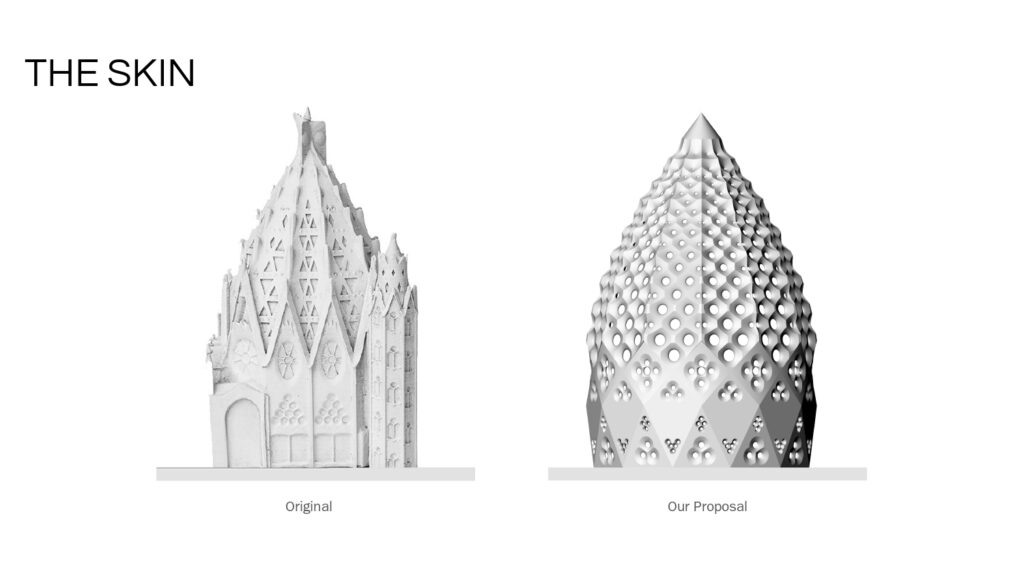
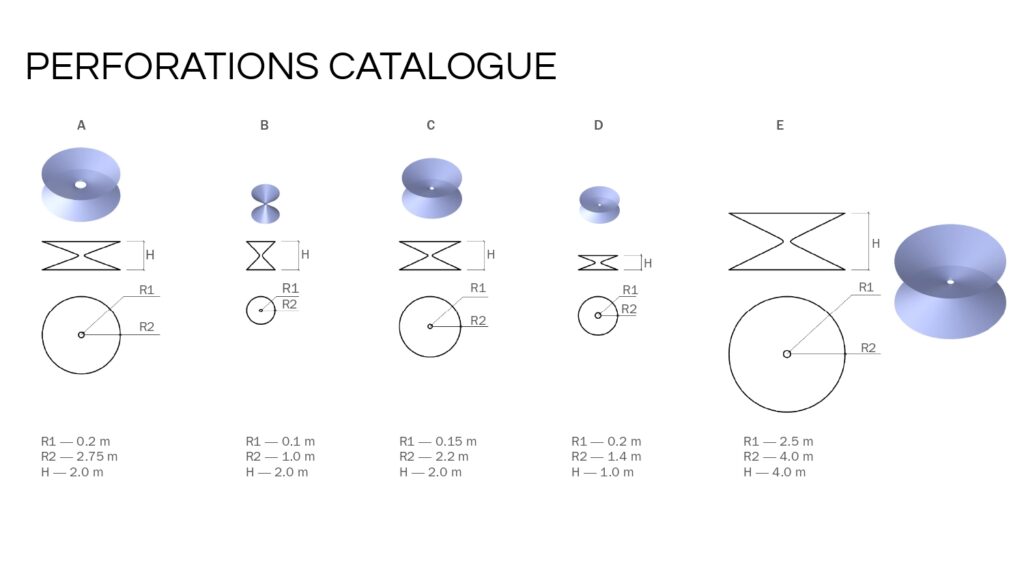
For the shell design, we used three types of surfaces: flat surfaces, parts of a hyperboloid, and parts of a hyperbolic paraboloid. The façade concept was based on the building’s internal structure. We developed four types of panels with different perforations.
Upper panels: For the upper level, a gradient of perforations was created. The perforations are shaped like hyperboloids, varying in height and diameter. These elements help increase the flow of light into the upper part of the sacristy.
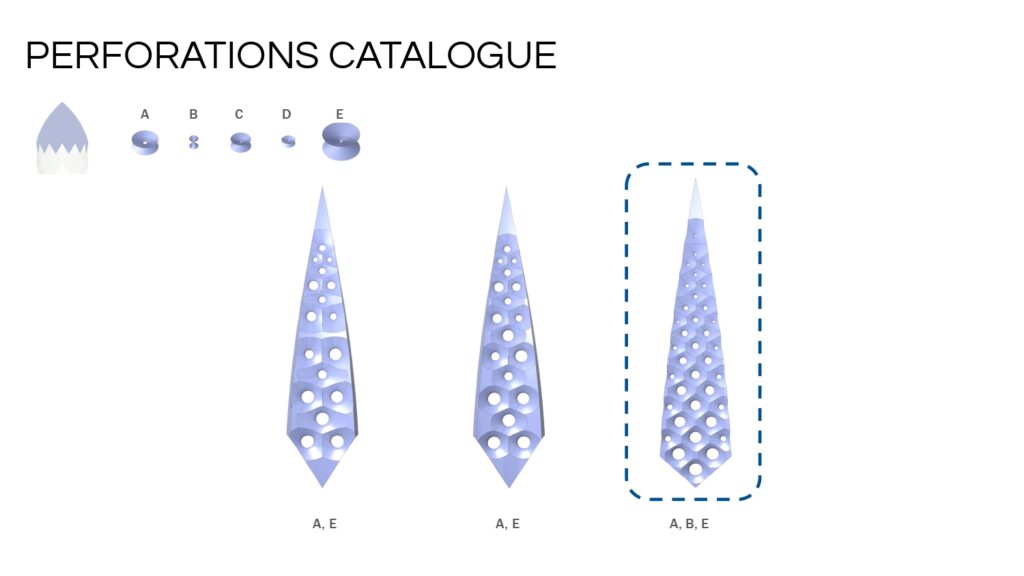
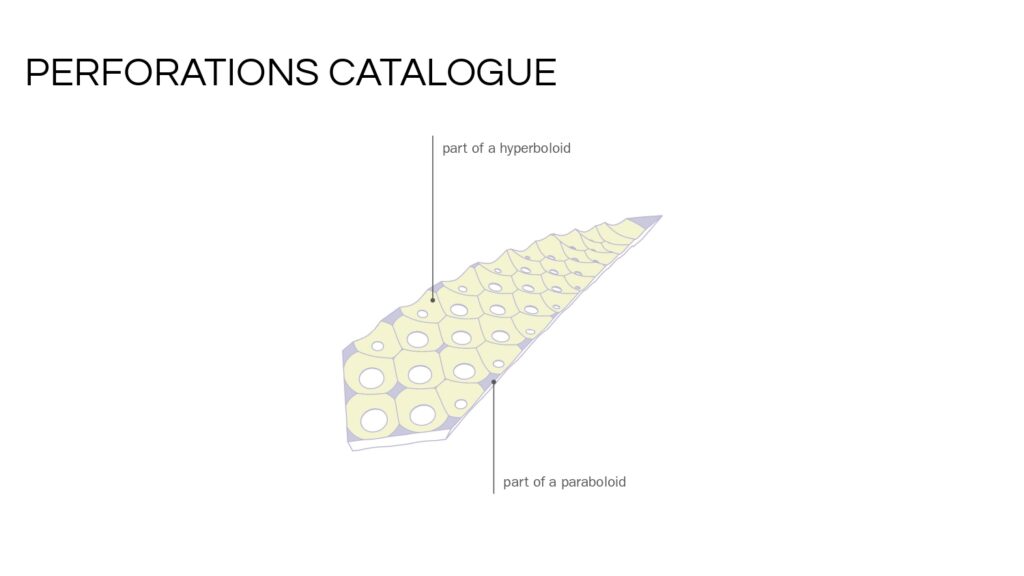
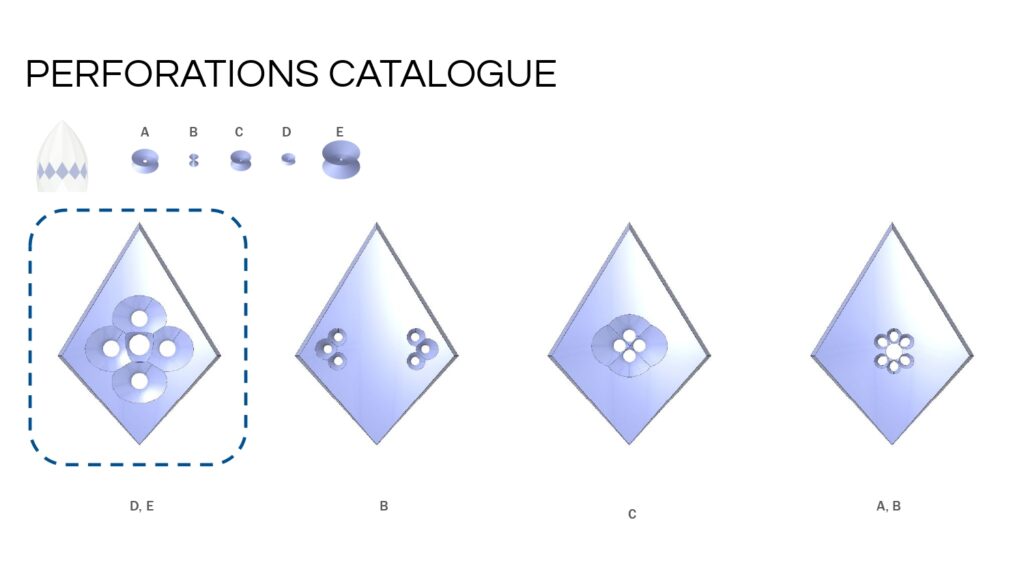
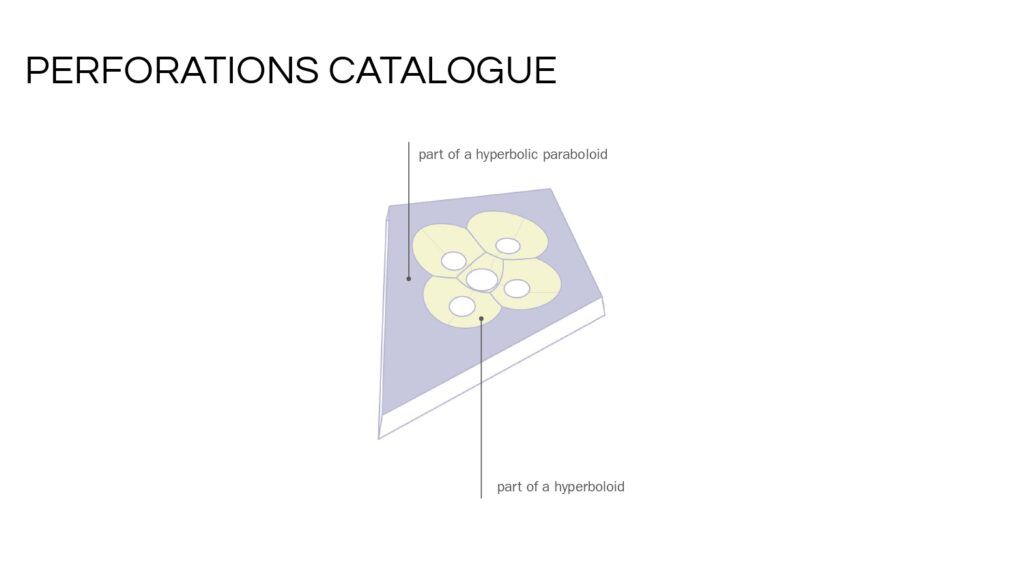
Lower panels: For the lower level, the placement of perforations was carefully chosen to align with the composition and internal structures. Similar to the upper panels, the perforations are hyperboloid-shaped with varying parameters.
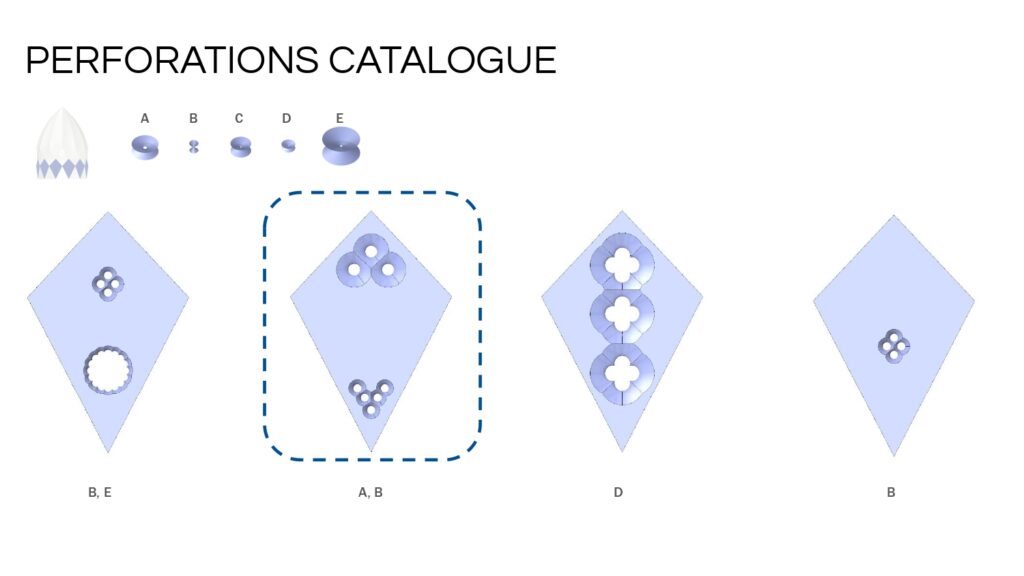
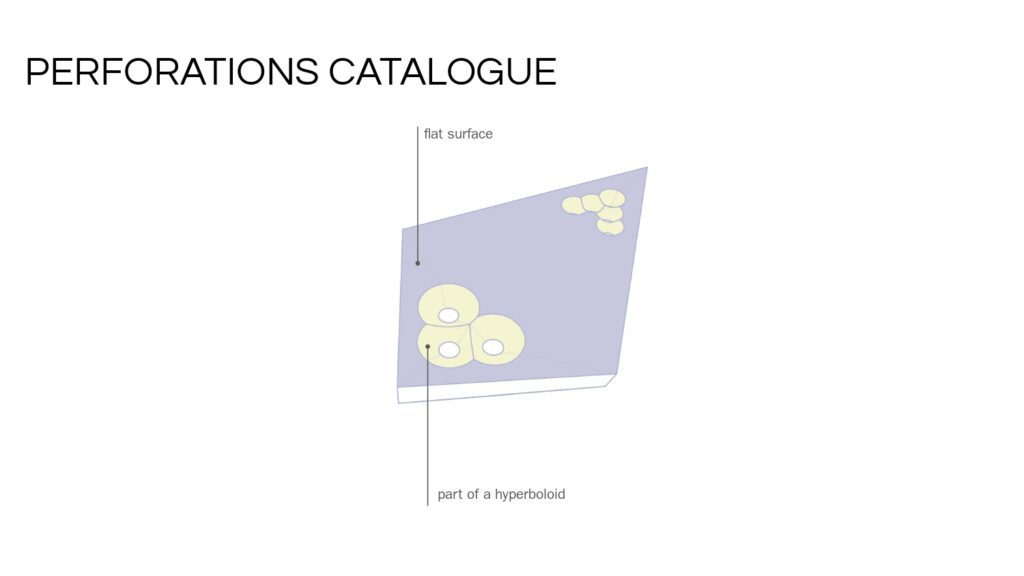
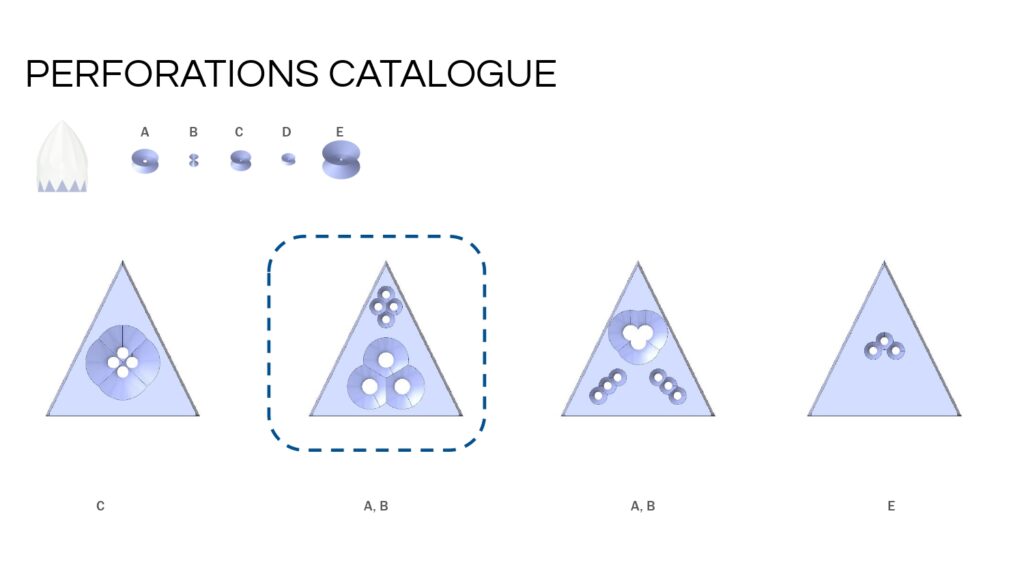
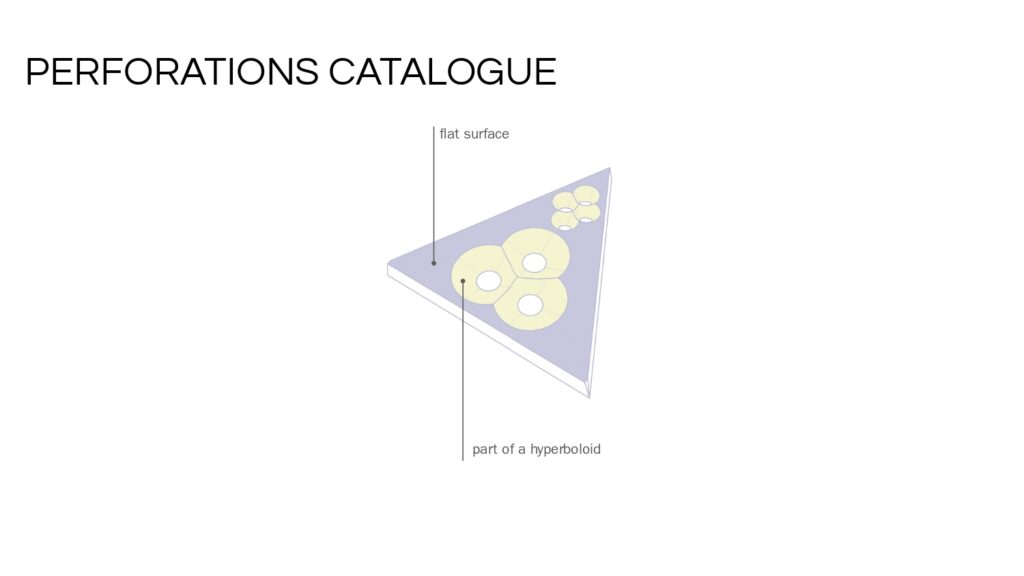
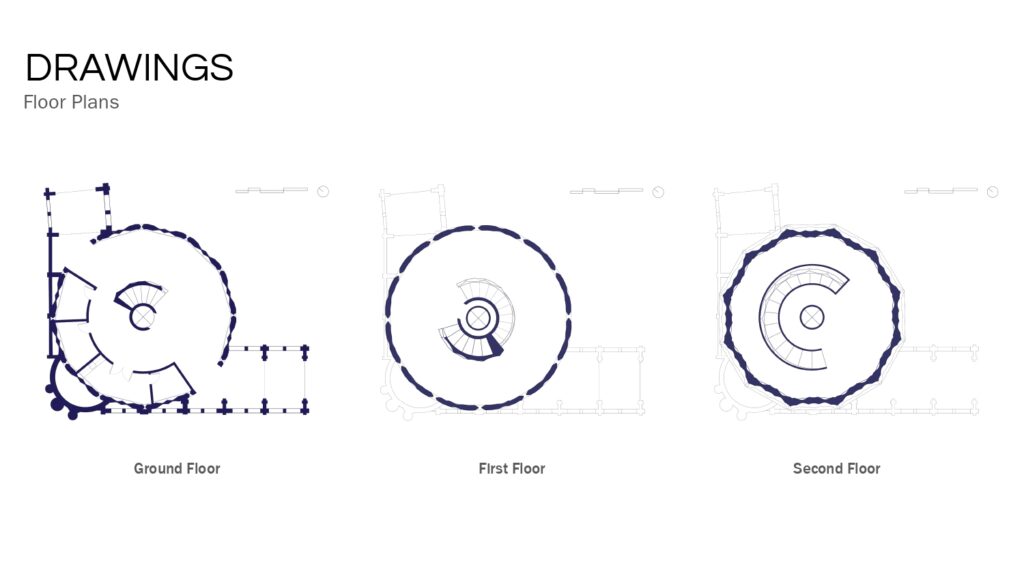
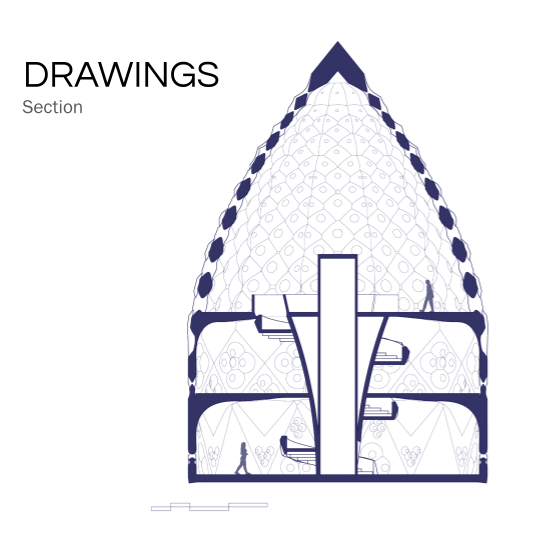
For our floor plan distribution, we set the Sacristy rooms and restrooms on the ground level and place the gallery and exhibition space in the first and second floors. In our section diagram we can see that the vertical circulation is concentrated in the center where the stairs wrap around this central hyperboloid that houses the elevator and also serves as structure for the floor plates.
It was important for us to preserve the high ceiling in the last floor to emulated the grandeur of the Sagrada Familia main building and decided to explore patterns with the skin perforations.
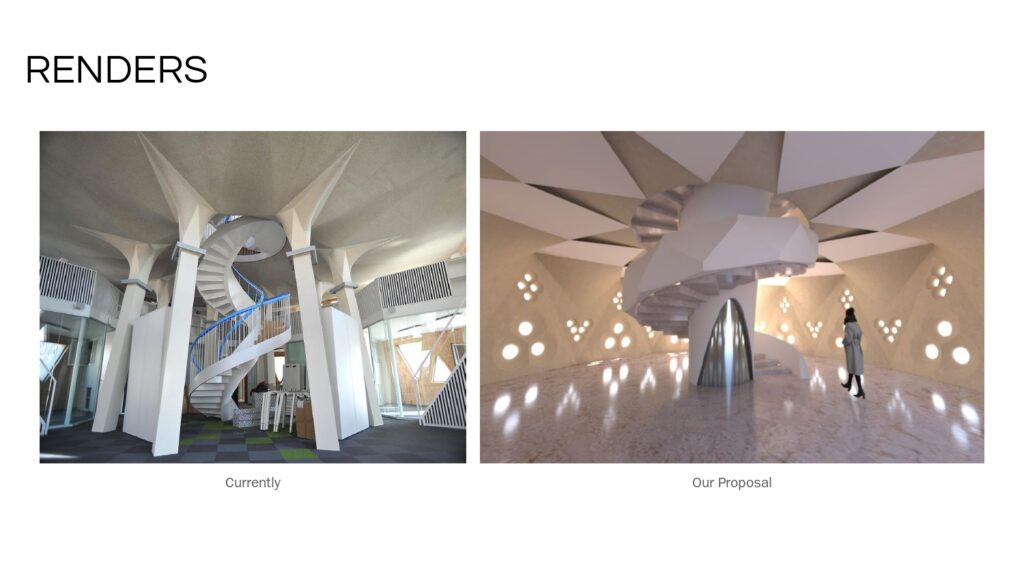
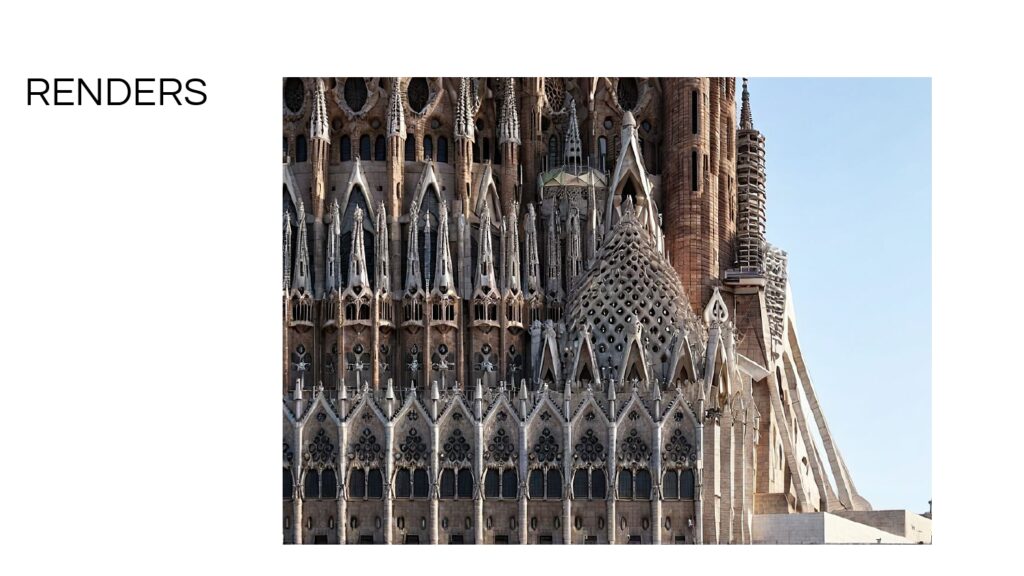
3D Prints
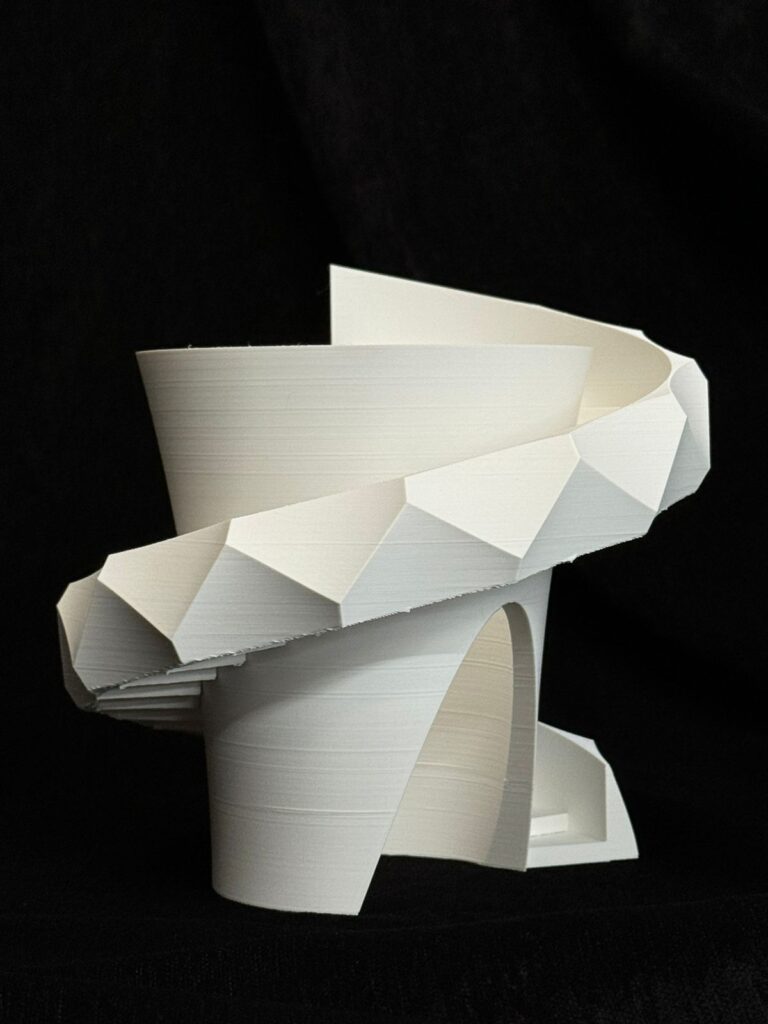
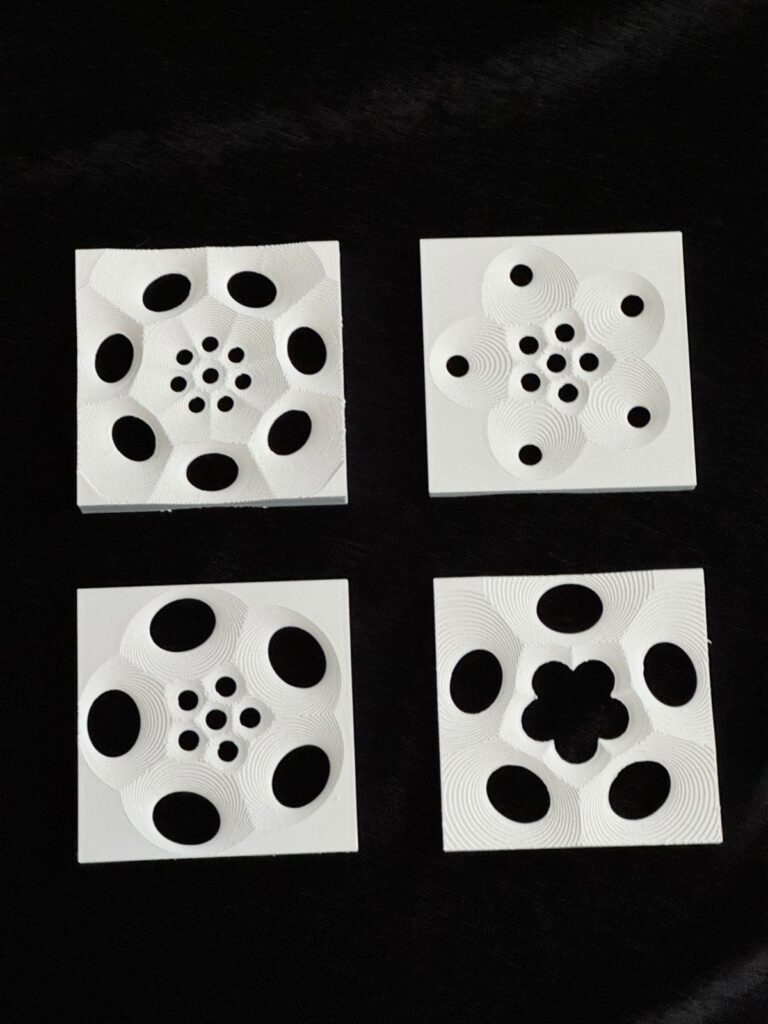
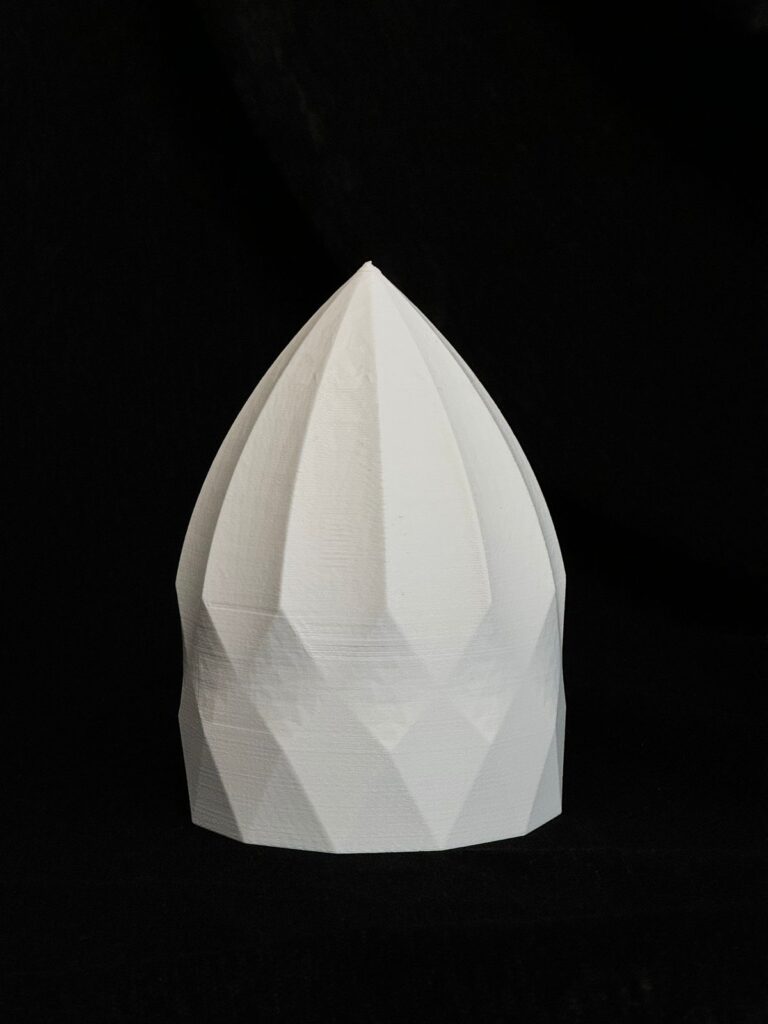
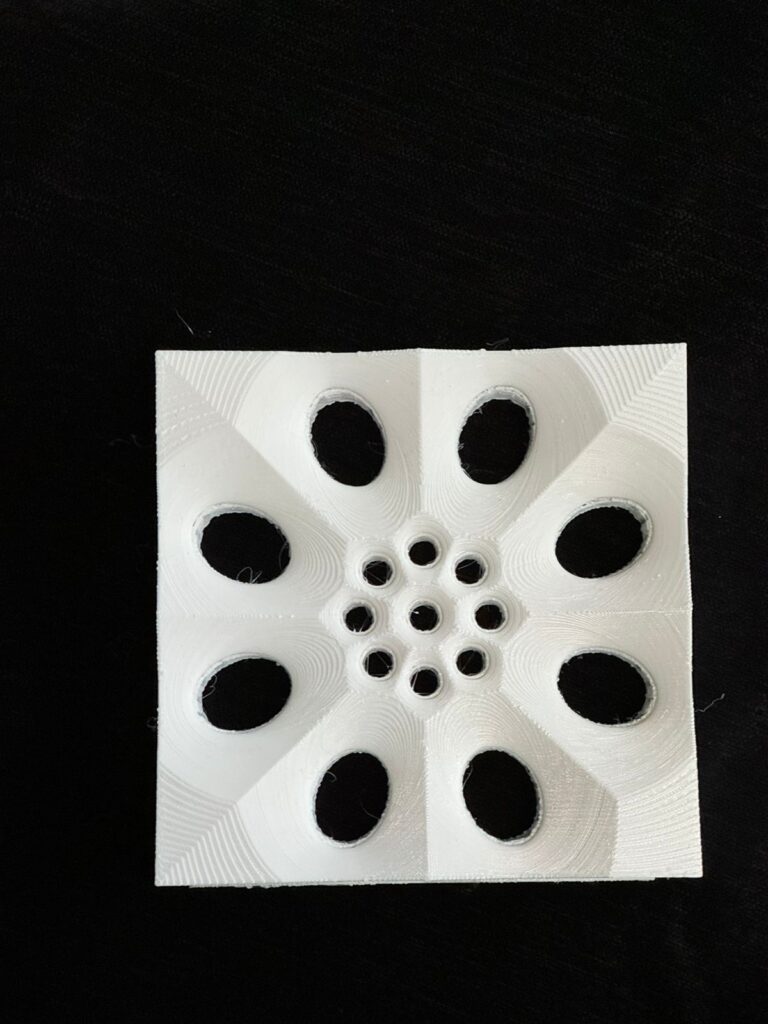
Bibliography
Reference 1
Ammonite Shell [Photograph]. Retrieved January 28, 2025 from Pinterest https://uk.pinterest.com/pin/73394668922363539/
Reference 2
Starfish [Photograph]. Retrieved January 28, 2025 from Pinterest https://uk.pinterest.com/pin/68740121147/
Reference 3
Sea Urchin Shell [Photograph]. Retrieved January 28, 2025 from Pinterest https://uk.pinterest.com/pin/363876844884568276/

